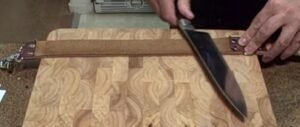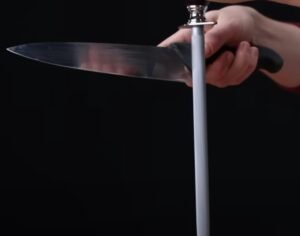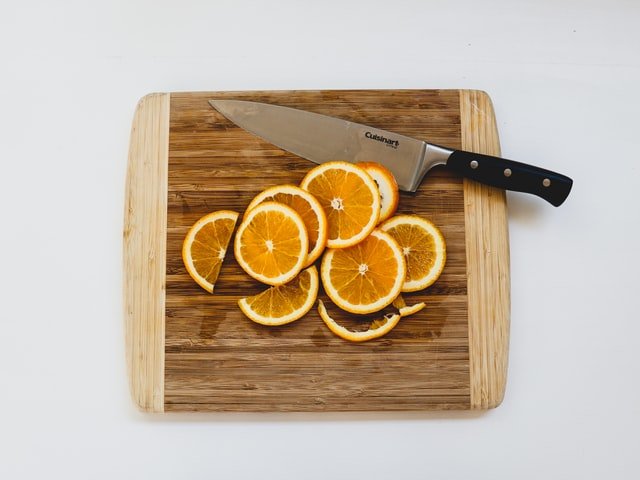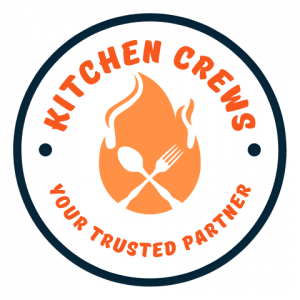Stropping realigns the edge while honing and reshaping it by removing metal. Strop regularly to maintain sharpness and prolong sharpening. Hone to restore a dull edge by grinding off steel. Stropping cannot fix a dull blade—hone first before finishing with stropping. Use both properly to keep knives razor-sharp.
Sharp knives make cooking easier and safer. But knife edges will inevitably dull with use over time. Stropping and honing are two techniques used to maintain and sharpen knife edges, but they work in different ways.
Knowing when to use stropping versus honing will help you keep your knives performing at their best. in this article, we will explore everything about stropping vs honing. without further ado, let’s get started.
Stropping vs. Honing
There are some significant differences between stropping and honing. Here is a comparison table for stropping vs honing:
| Key point | Stropping | Honing |
|---|---|---|
| Purpose | Maintain sharp edge | Restore dull edge |
| Process | Realigns edge by straightening and polishing | Removes metal to reshape the edge |
| Tools Used | Strop and stropping compound | Honing steel, ceramic rod, sharpening stone |
| Metal Removed? | No | Yes |
| When to Use | Frequently touch up sharp edge | When an edge is dull and needs sharpening |
| Pressure | Light | Frequently touch up the sharp edge |
| Final Step? | Yes, used after sharpening to finish the edge | No, often followed by stropping |
What is Stropping?
Stropping is the process of realigning and polishing the edge of a blade using a flexible leather or canvas strop. It does not remove metal from the blade but rather straightens out tiny bends or curvatures in the edge. Stropping also removes small burrs and debris that may form on the edge. This helps restore sharpness and prolong the life of the edge between sharpening.

The most common abrasive materials are leather, denim, and canvas. Stropping is typically done with a piece of leather that has been treated with diamond dust or other fine abrasives.
Stropping is typically done as the last step after sharpening a stone to refine the edge. It can also be done periodically in between full sharpenings to touch up the edge when it starts to lose bite. All you need is a strop (often with a handle) loaded with a fine stropping compound, which is an extremely fine abrasive paste. Just a few passes on the strop with light pressure is all it takes to realign and polish the edge.
What is Honing?
Unlike stropping, honing actually removes a tiny amount of metal from the blade edge to form a new, straight edge. It reshapes and sharpens the edge by abrasively grinding off a small portion of steel. A honing steel, ceramic honing rod, or fine sharpening stone can be used for honing.
While removing metal does lead to blade loss over time if overdone, it is necessary to reshape and sharpen edges once they become dull. Honing brings the edge back to sharp when it loses its ability to slice cleanly and easily. It should be done whenever a knife starts feeling dull before resorting to stropping or sharpening.

When to Use Stropping and Honing?
A good rule of thumb is to use stropping for knife maintenance and honing for knife sharpening. Stropping maintains an already sharp edge, prolonging the time between full sharpening sessions. It should be done regularly to care for the edge.
Honing is required when the edge has dulled and needs to be reshaped by removing metal. If your knife is no longer cutting well and has lost its sharp bite, it likely needs to be honed first before stropping. Stropping on its own is not effective on very dull edges.
How to Strop a Knife?
Here is a step-by-step guide on how to strop a knife for beginners:
- Get a strop. This is usually a strip of leather or canvas mounted on a flat surface with a handle. The strop should be wider than your knife blade.
- Apply stropping compound. This is a very fine abrasive paste that helps polish the edge. Apply a line of compound down the center of the strop.
- Hold the knife at a 20-30 degree angle against the strop. This should be the same angle the knife edge bevel is sharpened to. Maintain this consistent angle.
- Draw the knife blade away from you across the strop using light pressure. Apply just enough to feel the strop abrading the edge. Too much can round the edge.
- Lift the knife off the strop and flip it over to the other side of the blade. Repeat the stropping motion, drawing the knife towards you.
- Repeat alternating strokes for 6-10 strokes per side. Keep the motion smooth and consistent. The compound will blacken and polish the edge.
- Wipe the knife clean and carefully feel the edge for sharpness. It should easily catch your fingernail or slice through paper.
- Repeat stropping as needed over time to maintain the edge. Reapply the compound periodically.
- Always strop just before use for kitchen knives. A few quick strokes will align and polish the edge to razor sharpness.
How to Hone a Knife?
Here is a step-by-step guide on how to hone a knife:
- Select a honing tool. Use honing steel, ceramic honing rod, or fine sharpening stone. Ensure it is clean and suitable for the knife’s blade width.
- Hold the honing tool firmly on the counter or tabletop. Angle it ever so slightly up from the surface.
- Grip the knife handle and position the blade against the honing tool at a 15-20-degree angle. This should match the original sharpening angle.
- Apply moderate pressure and draw the knife down the honing tool using edge trailing strokes (moving from spine to edge). Maintain the angle consistently.
- Use the full length of the honing tool with firm, even strokes. Draw the entire knife edge over it from base to tip.
- Repeat alternating sides for 10-20 strokes per side. The edge will realign and any tiny chips in the edge will be ground off.
- Very lightly hone the tip area to avoid overgrinding. Rinse the knife and feel for sharpness along the edge.
- Finish by stropping the knife lightly to align the edge and polish. Now it’s ready for use.
- Hone whenever the knife feels dull. Don’t overhone often or it will shorten blade life. Honing maintains the edge between full sharpenings.
With correct technique and pressure, you can keep knives sharply honed for optimal performance. Always hone before difficult cutting tasks.

leather strop vs honing steel
Here is an overview of the use and purpose of a leather strop versus honing steel for knife maintenance:
Leather Strop
A leather strop is used as the final step after sharpening a knife to refine and polish the edge. The flexible leather aligns the edge, removing tiny bends or misalignments. It also polishes off any burrs left from sharpening. A honing compound is applied to the leather to act as a fine abrasive.
The strop does not sharpen or remove metal, only realigning what is already there. This helps the edge last longer before needing to be sharpened again. Light, smooth strokes are used on the strop. It should be done regularly as part of knife maintenance to keep a razor-sharp edge.
Honing Steel
Honing steel has a harder surface and is used when a knife edge becomes dull and needs some sharpening. The steel realigns but also removes a thin layer of metal from the edge, reshaping it. This restores the sharpness, though overuse will lead to overgrinding the blade.
The honing steel should be used whenever a knife is no longer cutting well and has lost its edge. More pressure is used than with a strop. The edge is drawn across the steel in smooth strokes to realign and abrade the metal along the blade. This prepares the knife to be finished by stropping.
Both stropping and honing have their place in knife maintenance. Understanding when and how to use each will help you keep your knives performing at optimal sharpness. The strop maintains the edge while the steel restores it as needed.
how does a leather strop work?
A leather strop works by straightening and polishing the edge of a blade through the following mechanisms:
- Flexibility – The leather has some give to it which allows it to gently bend and straighten out any misalignments along the edge. This realigns the edge.
- Fine abrasive – Often a super fine polishing compound is used on the strop. This acts as a very mild abrasive to gently “scrub” away any tiny burrs, folds, or debris along the edge.
- Pressure – The light pressure used when stropping ensures the abrasive action is delicate enough just to polish, not remove metal.
- Friction – Drawing the blade across the leather and compound creates friction that aids in smoothing and polishing the edge.
- Surface contact – The slightly soft surface of the leather fully contacts the edge as it is drawn along, helping to smooth out imperfections.
- Debris removal – Any metal debris from honing/sharpening or fabric fibers caught along the edge is wiped away by the stropping action.
The Bottom Line
Stropping and honing are two important techniques to master for maintaining sharp knives. Stropping realigns and polishes the edge using a leather strop, often with a fine compound. It should be done regularly to care for the edge. Honing removes a thin layer of metal to reshape and sharpen the edge when dullness sets in.
Recent Posts
All-purpose chef's knives, cook's knives, and other kitchen knives used daily for meal prepping fill overlapping roles of slicing, dicing, and chopping ingredients. However, the precise differences...
Bread knives have prongs to prevent the bread's soft interior from compressing downwards when sliced. As the knife presses down, the prongs allow pockets of air to escape sideways instead of getting...
